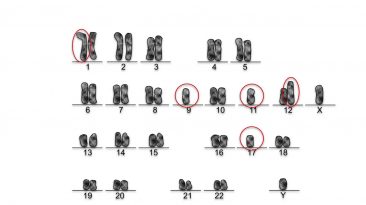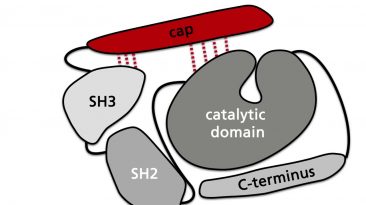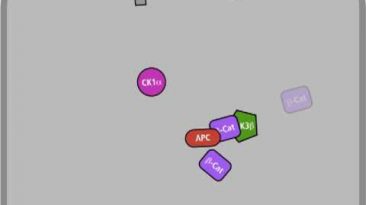More than 50 years ago, researchers detected typical chromosomal abnormalities in blood cells of patients with chronic myeloid leukemia (CML). These are an unusually...
Author - Davidl
The Philadelphia chromosome, which is found in leukemic cells in more than 90% of all patients with chronic myeloid leukemia (CML), results from a translocation between...
The gene product of the BCR-ABL1 fusion gene is a kinase with a higher activity compared to the activity of the native ABL1 kinase. The analysis of the protein structure...
BCR-ABL1 and the Philadelphia chromosome – Part 4: Therapy of tumors with BCR-ABL1 fusion proteins
The specific BCR-ABL1 inhibitor molecule Glivec was the first anti-cancer drug to be developed against a tumor-specific protein. Glivec binds to the catalytic domain of...
The MAPK pathway is dysregulated in more than 50 % of all human tumors. The pathway starts with the activation of a receptor tyrosine kinase, which transmits the signal...
The phoshatidylinositol-3 kinase (PI3K) can be activated by binding directly or via the protein IRS-1 to the activated receptor tyrosine kinase. Alternatively, PI3K can...
The second messenger PIP3 formed by PI3K can be hydrolyzed to PIP2 by the phosphatase PTEN. PIP2 can be hydrolyzed to diacyl glycerol (DAG) and inositol trisphosphate...
The phosphatase PTEN dephosphorylates PIP3 to PIP2, which can then be hydrolyzed to DAG and IP3. In addition, PTEN performs many other functions by binding to and...
In tumor cells of patients with congenital hamartoma syndromes such as Cowden syndrome (CS), tuberous sclerosis complex (TSC) syndrome and Peutz-Jeghers syndrome, the...
In normal cells without a Wnt signal a cytosolic destruction complex phosphorylates the signaling protein b-catenin leading to its degradation. In the presence of...










